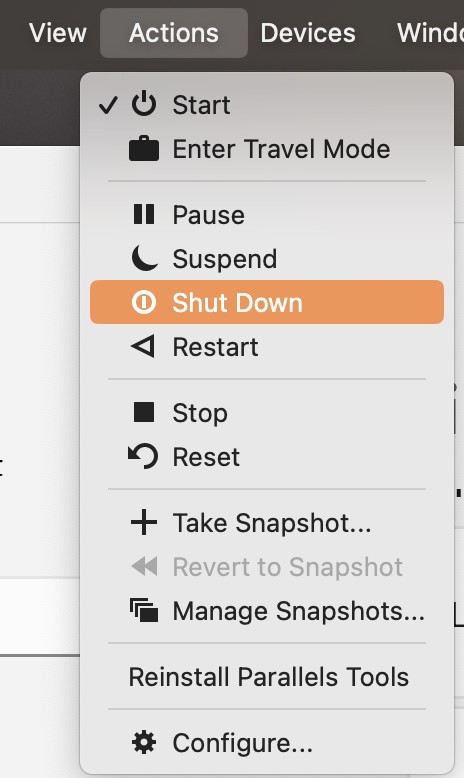Parallels Desktop is a popular application that allows you to run Windows and other operating systems on your Mac. While it’s a useful tool, there might come a time when you need to uninstall it. Whether you’re freeing up disk space, resolving software conflicts, or simply no longer need it, deleting Parallels Desktop from your Mac is a straightforward process, similar to removing most macOS applications. Importantly, just like other Mac apps, uninstalling Parallels Desktop by dragging it to the Trash will not automatically remove your virtual machines or their associated files.
This guide will walk you through the necessary steps to effectively remove Parallels Desktop application from your macOS system.
Step 1: Quit Parallels Desktop and Shut Down Virtual Machines
Before you begin the uninstallation process, it’s crucial to ensure that Parallels Desktop and any running virtual machines are completely shut down. This prevents any potential conflicts or data loss during the removal process.
First, if you have any virtual machines running, shut them down properly. Then, quit the Parallels Desktop application itself. You can do this by clicking on the Parallels Desktop icon in the menu bar and selecting Quit Parallels Desktop.
Alternatively, you can also right-click on the Parallels Desktop icon in your Dock and select Quit. Make sure that the indicator light underneath the Parallels Desktop icon in the Dock is no longer visible, indicating that the application is fully closed.
Step 2: Drag Parallels Desktop to the Trash
Once you have confirmed that Parallels Desktop is completely closed, the next step is to locate the application in your Applications folder and move it to the Trash.
- Open Finder.
- Click on Applications in the Finder sidebar.
- Scroll through your applications to find Parallels Desktop.
- Drag the Parallels Desktop icon from the Applications folder to the Trash icon in your Dock.
Step 3: Empty the Trash
After moving the Parallels Desktop application to the Trash, the final step in the standard uninstallation process is to empty the Trash. This will permanently delete the application files from your system.
- Right-click on the Trash icon in your Dock.
- Select Empty Trash from the context menu.
- Confirm that you want to empty the Trash in the dialog box that appears by clicking Empty Trash.
By emptying the Trash, you have now successfully uninstalled the Parallels Desktop application from your Mac.
Bonus Tip: Changing Default Application for VM Files
After uninstalling Parallels Desktop, you might find that some files are still associated with virtual machine applications. If you want to change the default application used to open these files, you can easily do so through the “Get Info” window in Finder.
- Right-click on a file that was previously associated with Parallels Desktop.
- Select Get Info from the context menu.
- In the Info window, find the Open with section.
- Click the dropdown menu under “Open with” and choose the desired application to open this type of file.
- To apply this change to all files of the same type, click the Change All… button, and confirm your action.
This ensures that files previously opened by Parallels Desktop will now open with your chosen application.
Important Note: Remember that uninstalling Parallels Desktop using these steps does not remove your virtual machines. Virtual machine files, which typically have a .pvm extension, are stored separately. If you wish to completely remove Parallels Desktop and all associated files, including your virtual machines, you will need to manually delete the virtual machine files as well. Refer to Parallels documentation for instructions on how to remove virtual machines if needed.
